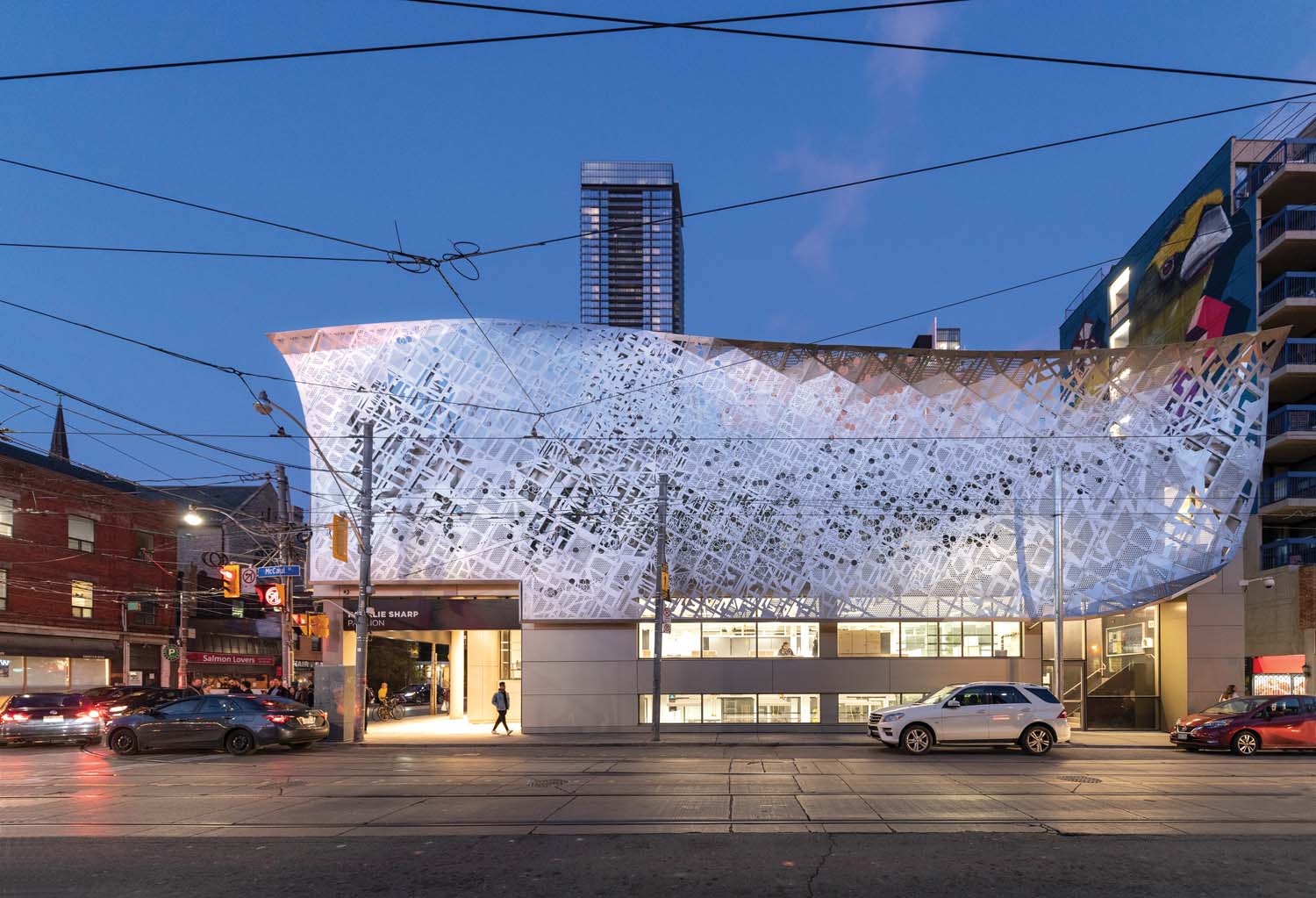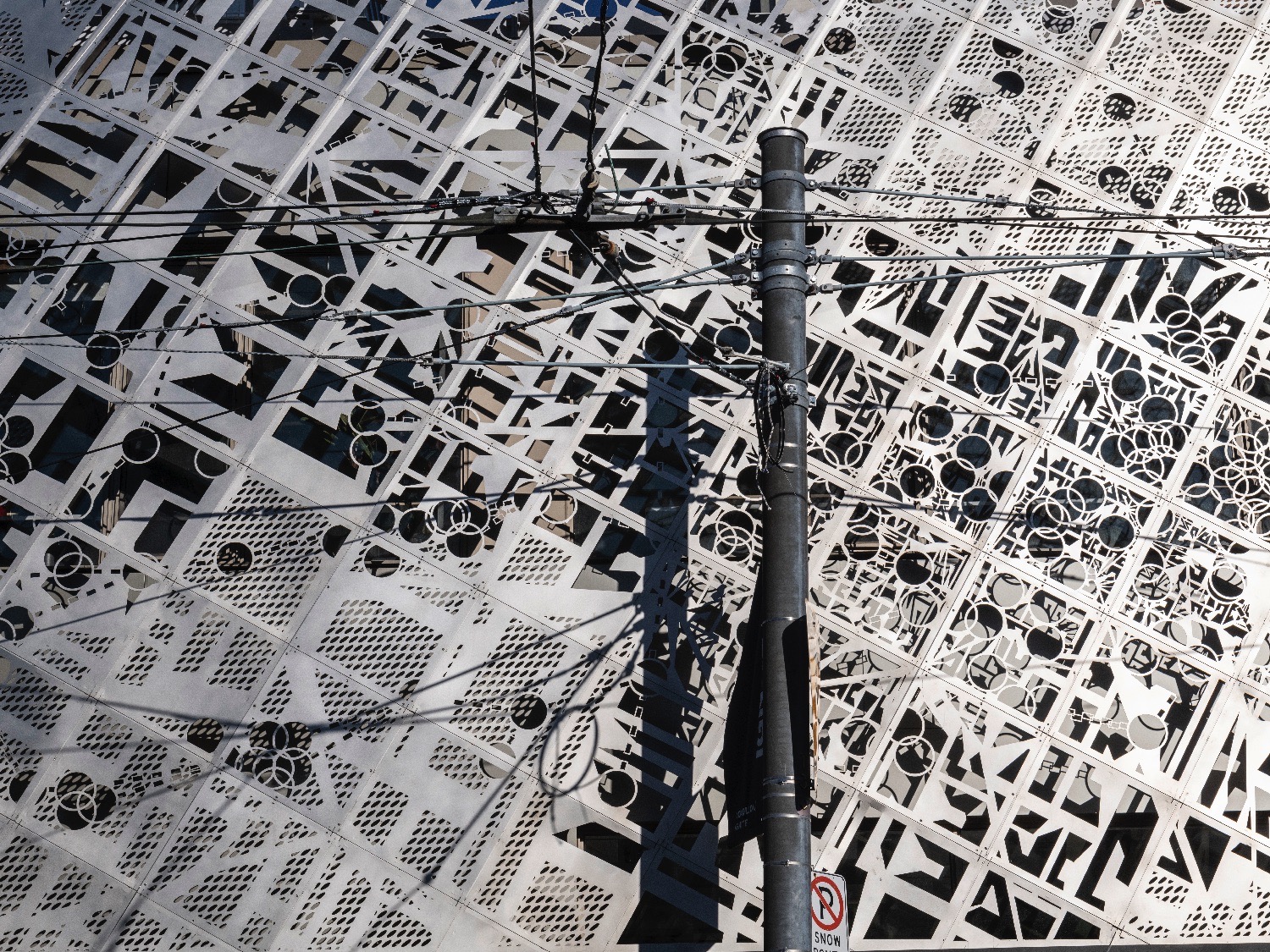Screen Art: Rosalie Sharp Pavilion, OCADU, Toronto, Ontario
A new renovation wraps OCADU’s Rosalie Sharp Pavilion in a stainless steel map of Toronto’s artistic communities.

As part of pandemic control measures, museums and galleries in many parts of Canada have been closed, partially opened, and closed again over the past year. Public art and architecture assume a fresh importance: it’s often the only real-life art we can get.
This makes Bortolotto’s recently renovated Rosalie Sharp Pavilion especially welcome. A stainless-steel scrim, intricately perforated with a lace-like pattern, wraps this Ontario College of Art & Design University (OCADU) building in downtown Toronto. The undulating metal sparkles in the sun, peeling upwards and outwards at its edges.

The laser-cut pattern is a map of Toronto’s artistic communities, with McCaul and Dundas—the location of OCADU, as well as the Art Gallery of Ontario—at its centre. Circles indicate art galleries and design studios; dark checks denote zones of public art; and chevron perforations highlight areas where artist communities are concentrated. “The data is meant to describe the city as influenced spatially by the production of art and design,” says principal Tania Bortolotto.

The pattern was carefully calibrated so that the scrim would provide the appropriate amount of solar shading for the interior. Manufacturing was a further challenge: the studio’s Grasshopper-generated parametric designs needed to be translated into CATIA, and numerous details added to accommodate for the practicalities of fabrication. The design also addresses a variety of technical issues, from wind to snow. Heated wires along the top prevent icicle formation, snow guards are positioned behind the scrim, and a gutter is concealed along its lower edge.

The curving lines of the installed panels echo the undulating façade of Frank Gehry’s neighbouring AGO renovation. And fittingly, Bortolotto’s intervention has a similar ethos of using an artistic approach to mark an art institution.

But instead of conceiving the scrim as a stand-alone piece of art, Bortolotto has made it part of the building, and part of the city. The intersection is a happy tangle of traffic lights, streetcar cables, electrical wires, and light standards. None of this is photoshopped out of the architect’s images of the project. It’s all part of the urban life that marks the building, and that feeds the artistic communities that thrive in Toronto.
